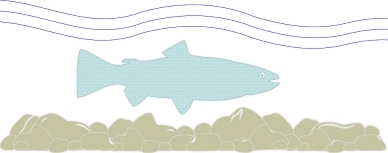|
|
Modern developments change rivers
In most areas of the world, people and development tend to be
concentrated
on the floodplain of large rivers where transportation, food, and water
supply needs are easily accommodated. However, development often
results in drastic changes to the morphology and ecology of
rivers.
These changes can be brought about through:
-
channel confinement
-
vegetation removal (both on the banks and within the channel)
-
gravel removal
-
changes to groundwater levels under the floodplain
Contemporary British Columbia rivers are a lot different today
than they were 100 years ago
In British Columbia, there is a tendency to associate river changes
with logging. However, many other activities such as flood
control,
water supply, land development, communication and transport also impact
rivers.
Critical needs to understand large rivers in British
Columbia
While there has been considerable focus on fish habitat within small
streams, the ecology of large rivers remains largely
uninvestigated.
Critical research needs include:
-
learning more about how big rivers change their channel, hence habitat;
-
learning more about fish habitat requirements;
-
learning more about how changes in habitat affect fish populations; and
-
learning more about maintaining ecologically acceptable conditions in
rivers.
Lower Fraser River - Gravel Reach Study
Fraser River presents a significant potential flood hazard to human
settlement within the Lower Mainland of British Columbia. With
peak
flows of about 10 000 m3/s or more during spring runoff, extensive
areas
could be flooded. Following the great flood of 1894 (estimated at
18,000 m3/s), efforts commenced to protect developing settlements from
the river. Over the past century, an ongoing program of river
dyking
and bank protection has been pursued, especially after 1948.
There is concern, however, that the dykes might be too low in
some locations
between Hope and Mission as gravel moving from the mountains is
deposited
on the dyked and confined channel. The rising channel bed
increases
flood hazards by reducing the flow capacity of the river. It
appears
as if this problem could be readily solved by removing gravel to lower
the streambed, but …
-
The reach has an exceptionally diverse aquatic ecosystem with high
economic
value.
-
The effect of gravel removal on these values is not understood.
-
The recreational opportunities and spiritual values of the riverscape
are
increasingly recognized.
The problem, then, is to find a way to manage the river which maintains
the existing flood protection in a manner consistent with maintaining
the
ecological character of the river. A solution to the problem of
managing
the gravel reach is being sought, in part, through research at the
Department
of Geography, University of British Columbia. |

